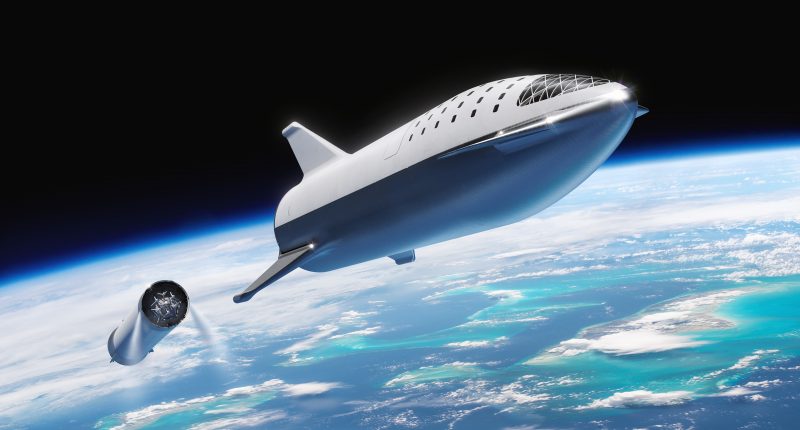In a new move towards humanity’s attempt to conquer space, American space administration agency NASA has announced that it has handed a $332 million contract to provide launch services for NASA’s Power and Propulsion Element (PPE) and Habitation and Logistics Outpost (HALO) to Elon Musk’s Space Exploration Technologies (SpaceX). SpaceX will take the two parts on a Falcon heavy rocket in 2024.
Both the PPE and HALO are integral parts of NASA’s most ambitious project in recent times, the Gateway lunar orbiter that will function as a pit stop for future moon missions.
Gateway is slated to be the first long-term orbiting outpost around the moon, serving as a rendezvous point and supporting sustainable astronauts and deep space exploration in the long run. It remains the key component to NASA’s Artemis program, and will be located tens of thousands of miles at its farthest distance from the lunar surface, in a near-rectilinear halo orbit.
The Falcon Heavy provides a larger lift capacity than the Falcon 9 (the reason why it was chosen for this project) currently used by SpaceX and has only two successful commercial launches to its name since its successful test flight in early 2018.
The PPE and HALO, after they have been integrated on Earth, will be launched together in May 2024 from Launch Complex 39A at the Kennedy Space Center in Florida.
The HALO is a pressurized living quarters for astronauts to live in during their time at the outpost, and is slated to be the docking hub for the station as well as the command and control center. It is supposed to support science investigations, distribute power, provide communications for visiting vehicles and lunar surface expeditions, and supplement the life support systems aboard the Orion, the spacecraft that will deliver astronauts to the Gateway.
The PPE, a 60kW class solar electric propulsion spacecraft, will be integrated with the HALO. Its duties will include providing power, high-speed communications, attitude control, and the capability to move the Gateway to different lunar orbits. It will also provide more access to the lunar surface. Gateway is slated to aid NASA and its partners to conduct deep space science and technology investigations on an unprecedented scale.
As to why SpaceX was given the nod to transport the HALO and the PPE into space, it is because these two components are too big to be transported in pieces in smaller rockets. Another factor working in SpaceX’s favor is the unavailability of rival heavy launch rockets from companies that have several successful missions to their name.
The Gateway, if successful, will be the culmination of the collaboration between NASA, SpaceX, Dulles-based Northrop Grumman Space Systems (who is designing the HALO), and Colorado-based MAxar Technologies (who is building the PPE.)
The Tech Portal is published by Blue Box Media Private Limited. Our investors have no influence over our reporting. Read our full Ownership and Funding Disclosure →






